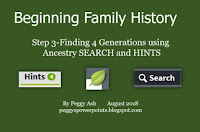Finding FamilySearch Source List Images

The image on the upper left is a typical example of the Memories tab on a FamilySearch person page that has not been enriched with the images available in the list of Sources. The image on the lower left is that same Memories page once the Sources list's images have been located and added. Finding FamilySearch Source List Images PowerPoint PDF Finding FamilySearch Source List Images PowerPoint PDF Handout Version Someone new to family history will view Memories long before they will view, understand, or utilize the Sources tab. Original documents speak to hearts. They validate a person's life and give us a peek through the window of time. When documents are made readily viewable in Memories novices may see a census or vital record for the first time. When these documents are about people that are meaningful to them they engage more fully in family history. Because of this, there is great value in enriching Memories pages with images of original documents. Without








